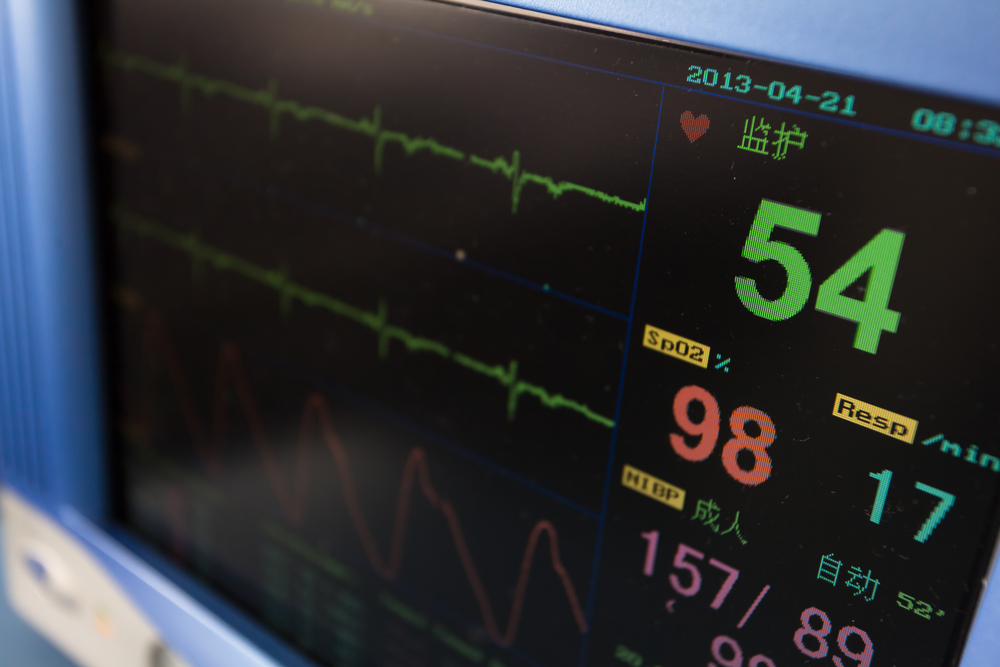 Lincolnshire, Illinois-based iRhythm Technologies, Inc.’s ZIO service combines wearable biosensor devices with mobile and cloud-based technology designed to improve how heart arrhythmias are diagnosed and managed.
Lincolnshire, Illinois-based iRhythm Technologies, Inc.’s ZIO service combines wearable biosensor devices with mobile and cloud-based technology designed to improve how heart arrhythmias are diagnosed and managed.
A study published in the Journal of Health Economics and Outcomes Research entitled “Cost Analysis and Clinical Outcomes of Ambulatory Care Monitoring in Medicare Patients: Describing the Diagnostic Odyssey,” (JHEOR 2015;2(2):161-9 ) coauthored by Rene J.G. Arnold and Andrew Layton. The paper assesses costs incurred in diagnosis, additional monitoring and following clinical events after initial use of the Holter monitor device with Medicare patients suffering from cardiac arrhythmia.
The iRhythm funded study suggests that incomplete or missing diagnosis, or necessity of additional testing after the initial use of the Holter monitor, resulted in $45 million worth of wasted Medicare expenditures — or slightly more than $23,000 per patient. Expanded to cover the entire Medicare Fees-for-Service population, the calculated total came to greater than $900 million in wasted spending over the two-year period of the study.
The company’s mission statement is to reduce healthcare costs and improve arrhythmia detection, characterization and diagnosis through provision of simple, seamless integration of heart rhythm data from client to cloud to clinician, thereby improving doctors’ ability to detect arrhythmias, potentially changing the course of treatment. iRhythm’s ZIO Service analyzes up to 20,000 minutes of heart beat data per patient in order to provide the physician with an efficient and cost-effective platform for evaluating patients with suspected arrhythmias. iRhythm claims its digital health technology and diagnostic support services provide clear, actionable information for physicians, and are clinically proven to enhance clinical decision making and lower healthcare costs.
“Arrhythmias are difficult to diagnose. A Holter monitor is typically used to record the heart’s electrical signals for a 24- or 48-hour period. However, arrhythmias do occur outside that window,” says Judy Lenane, RN, MHA, executive vice president and chief clinical officer of iRhythm Technologies, Inc. “The ZIO Service records and stores beat-to-beat data in its entirety, which can provide a more complete picture to a healthcare provider and allow for more accurate diagnosis. We provide a significant advantage as the ZIO Service potentially eliminates the need for furthering testing, resulting in reduced healthcare costs.”
Ms. Lenane is coauthor of another study published in the journal Circulation: Cardiovascular Quality and Outcomes entitled “Cost Analysis and Clinical Outcomes of Ambulatory Care Monitoring in Medicare Patients“ (Circulation: Cardiovascular Quality and Outcomes. (2014; 7: A246)), with Andrew J. Layton of Quorum Consulting, San Francisco, California, Shawn H. Becker of iRhythm Technologies, Inc.’s, San Francisco office, and Jay H Alexander of NorthShore Univ Health System, of Bannockburn, Illinois.
The researchers note that arrhythmia detection using ambulatory ECG monitoring is not well documented, and that their objective was to characterize the diagnosis, additional monitoring, clinical events and costs that occur after use of an index Holter in Medicare patients.
They found that 11 percent of the population attained a diagnosis with an index Holter device without additional monitoring or clinical event (diagnosis attained cohort) and incurred total allowed charges in the two year period (charges) of $48 mil. Greater than a quarter (27 percent) of the population did not reach a diagnosis (no diagnosis cohort) and continued in the diagnostic and clinical event odyssey. Half of the patients in the no diagnosis cohort (13 percent) experienced clinical events despite repeat monitoring and incurred charges of $63 million dollars. A significant number of those patients had their first clinical event within three months of their index Holter including stroke, TIA and cardiac arrest. The other half of the no diagnosis cohort (14%) received additional cardiac monitoring and total charges of $61 mil. Holter was the most commonly repeated test.
The investigators conclude that repeat monitoring, often of the same type as done initially, frequently did not yield a diagnosis and patients continued to experience clinical events at a substantial healthcare cost. Additional diagnostic paradigms should be explored to improve these patient and system outcomes.
In a release, iRhythm cites a separate analysis conducted by Decision Driver Analytics, Inc., an independent third-party research organization, whose preliminary findings indicated that initial ZIO Service employment may be expected to reduce two-year arrhythmia diagnosis and management costs by an average of $5,500 per patient compared to the Holter monitor.
“We are very pleased about the growing body of data that further validate the cost effectiveness of the ZIO Service compared to traditional approaches to arrhythmia detection,” said Kevin King, president and chief executive officer of iRhythm Technologies. “iRhythm is focused on creating solutions that change the way clinicians diagnose difficult to detect arrhythmias, streamlining the diagnoses to treatment pathway while significantly decreasing healthcare costs.”
The company also notes that previous studies have demonstrated the ZIO Service’s ability to rule-in or rule-out arrhythmia in an average of three to four weeks, compared to only 36 percent of patients obtaining a definitive diagnosis within two years if a Holter monitor is used as their initial diagnostic tool. Moreover, in arrhythmia patients, the ZIO Service provided immediate diagnosis, eliminating need of additional diagnostic testing and enabling immediate appropriate treatment 94 percent of the time.
The ZIO Service integrates easy-to-use biosensor technology that captures electrocardiography data for up to 14 days, powerful analytics and medical expertise for improved arrhythmia detection.
For more information, visit:
http://www.irhythmtech.com
Sources:
Rhythm Technologies, Inc.
Journal of Health Economics and Outcomes Research
Circulation: Cardiovascular Quality and Outcomes


